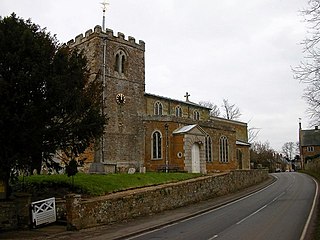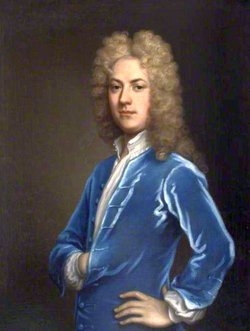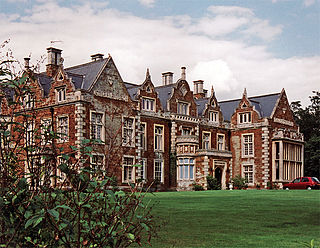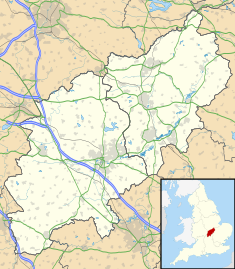
Garden gnomes are lawn ornament figurines of small humanoid creatures based on the mythological creature and diminutive spirit which occur in Renaissance magic and alchemy, known as gnomes. They also draw on the German folklore of the dwarf.

Lamport is a village and civil parish in West Northamptonshire, England. The village is on the A508, about 8 miles (13 km) south of Market Harborough and 8 miles (13 km) north of Northampton. Nearby is Lamport Hall. At the time of the 2001 census, the parish's population was 207 people, including Hanging Houghton and increasing to 225 at the 2011 Census.

Clevedon Court is a manor house on Court Hill in Clevedon, North Somerset, England, dating from the early 14th century. It is owned by the National Trust and is designated as a Grade I listed building.

Burton Agnes Hall is an Elizabethan manor house in the village of Burton Agnes, near Driffield in the East Riding of Yorkshire, England. It was built by Sir Henry Griffith in 1601–10 to designs attributed to Robert Smythson. The older Norman Burton Agnes Manor House, originally built in 1173, still stands on an adjacent site; both buildings are now Grade I listed buildings.

The Isham Baronetcy, of Lamport in the County of Northampton, is a title in the Baronetage of England.

Sir Charles Edmund Isham, 10th Baronet was an English landowner and gardener based at Lamport Hall, Northampton. He is credited with beginning the tradition of garden gnomes in the United Kingdom when he introduced a number of terracotta figures from Germany in the 1840s. Nicknamed "Lampy", the only gnome of the original batch to survive is on display at Lamport Hall and insured for £1 million.
Isham is a surname. Notable people with the surname include:

Sir Justinian Isham, 2nd Baronet was an English scholar and royalist politician. He was also a Member of Parliament and an early member of the Royal Society.

Rev. Euseby Isham, D.D. was an English academic administrator at the University of Oxford.

Joan Carlile or Carlell or Carliell, was an English portrait painter. She was one of the first British women known to practise painting professionally. Before Carlile, known professional female painters working in Britain were born elsewhere in Europe, principally the Low Countries.

Sir Thomas Isham, 3rd Baronet of Lamport is known for a diary he wrote from 1671 to 1673 of his observations as a teenage member of the English aristocracy.

Sir Justinian Isham, 4th Baronet was an English landowner and Tory politician, who sat in the House of Commons almost continuously from 1685 until his death in 1730. He was the longest serving member, later termed Father of the House, from 1729 to 1730.

Sir Gyles Isham, 12th Baronet was an English aristocrat, actor, and historian.

Sir Justinian Isham, 5th Baronet, of Lamport, Northamptonshire was a British Tory politician who sat in the House of Commons from 1730 to 1734.

Sir Edmund Isham, 6th Baronet was a Member of Parliament for several successive terms during the reigns of Kings George II and George III of Great Britain.

Sir John Isham Bt (1582-1651) was High Sheriff of Northamptonshire and created the 1st hereditary Baronet of Lamport by King Charles I.
Elizabeth Isham (1609–1654) was an English intellectual, herbalist, and diarist. She is best known today for her two autobiographical diaries, which are among the earliest known examples of autobiography written by an Englishwoman. Although a wealthy woman, Anne Cotterill has said that for Isham her "mind was more to her than wealth".

Sir Justinian Isham IV was the 7th Baronet of Lamport and served in 1776 as High Sheriff of Northamptonshire.

Finedon Hall is a Victorian country house in Finedon, Northamptonshire. It is a Grade II listed building.
Bruce Anthony Bailey ALA FSA is an English author, architectural historian, archivist, librarian, freelance lecturer and photographer. He was elected a Fellow of the Society of Antiquaries of London on 1 January 2003. He lives near the village of Lowick, Northamptonshire, works as an archivist and librarian, and is a Trustee of the Northamptonshire Historic Churches Trust.



























